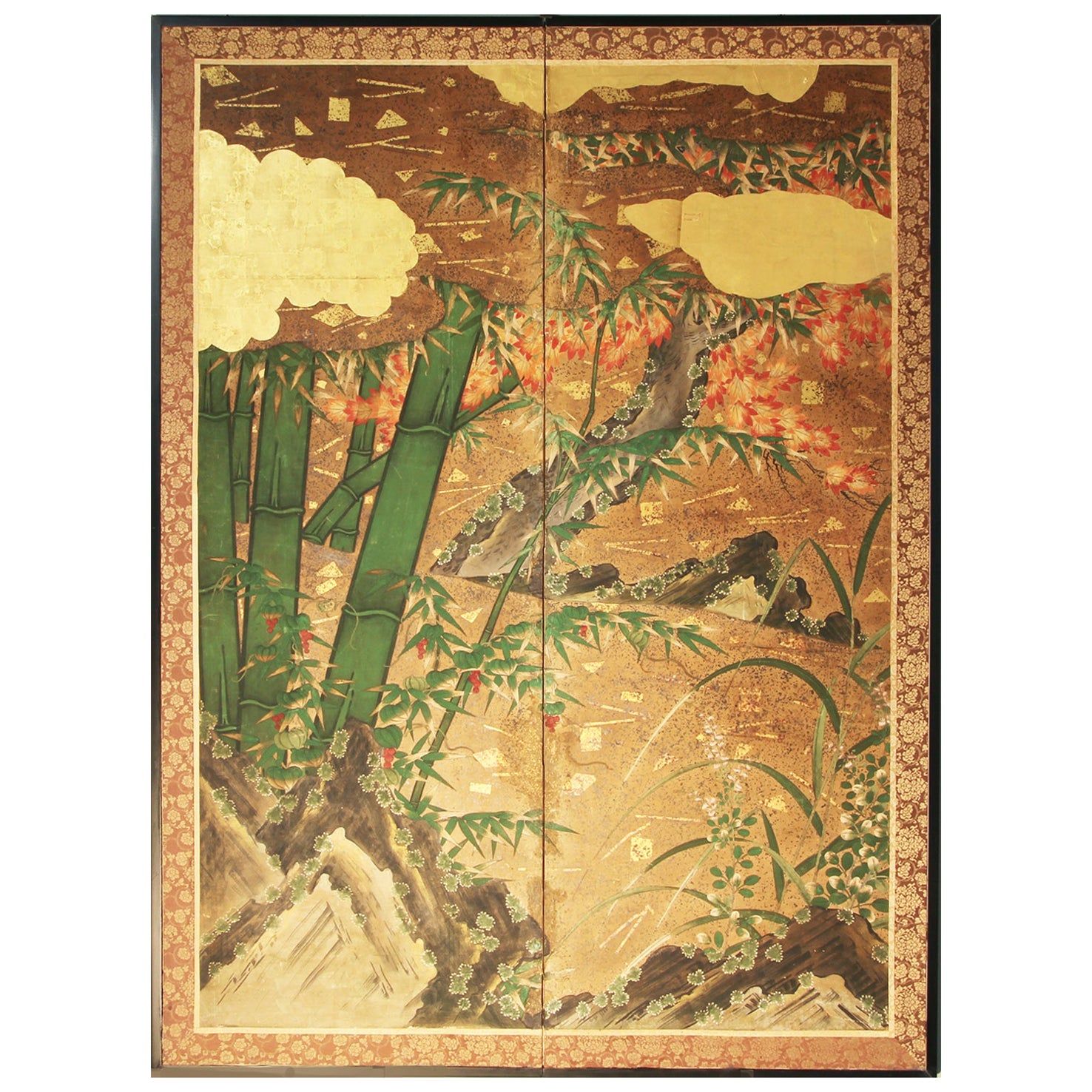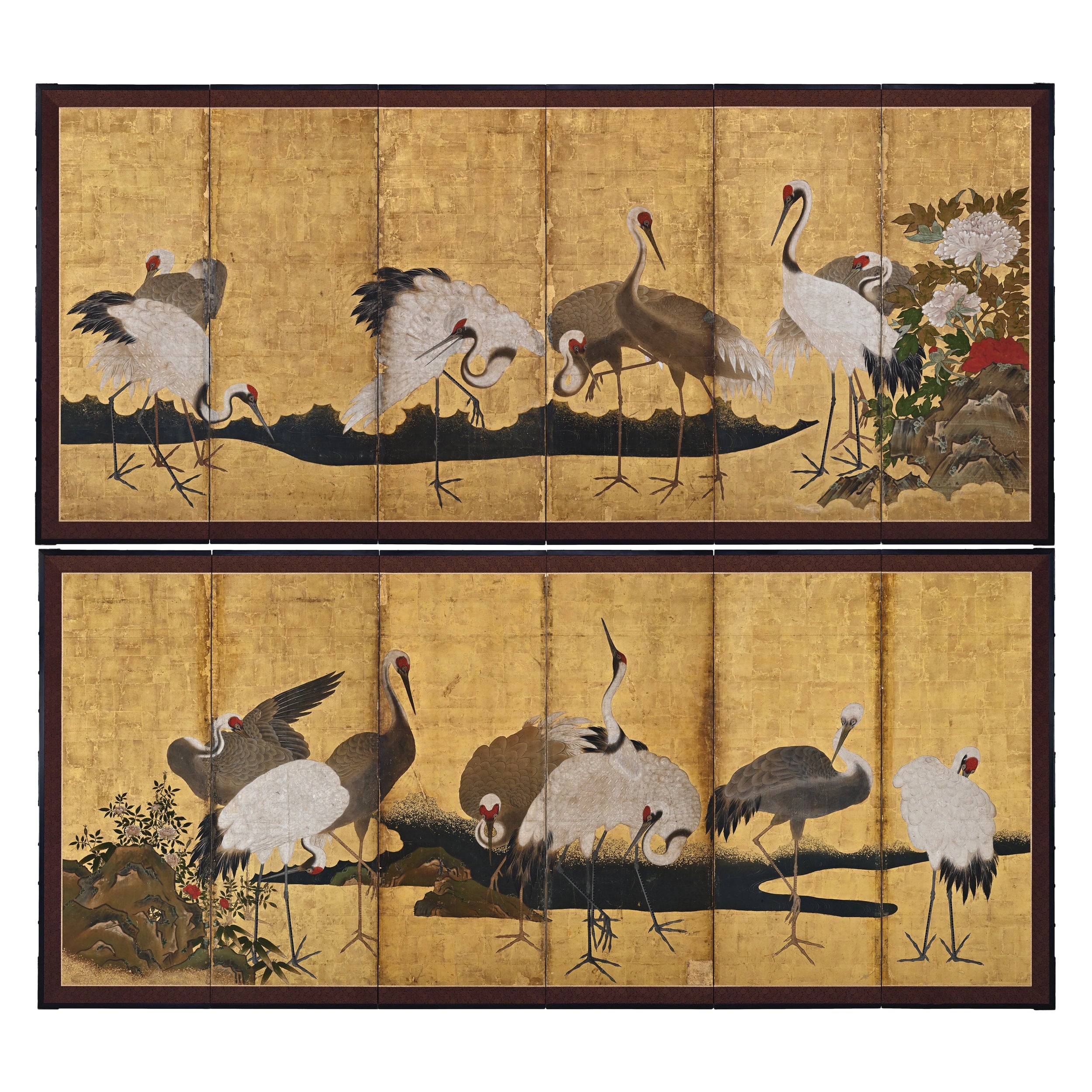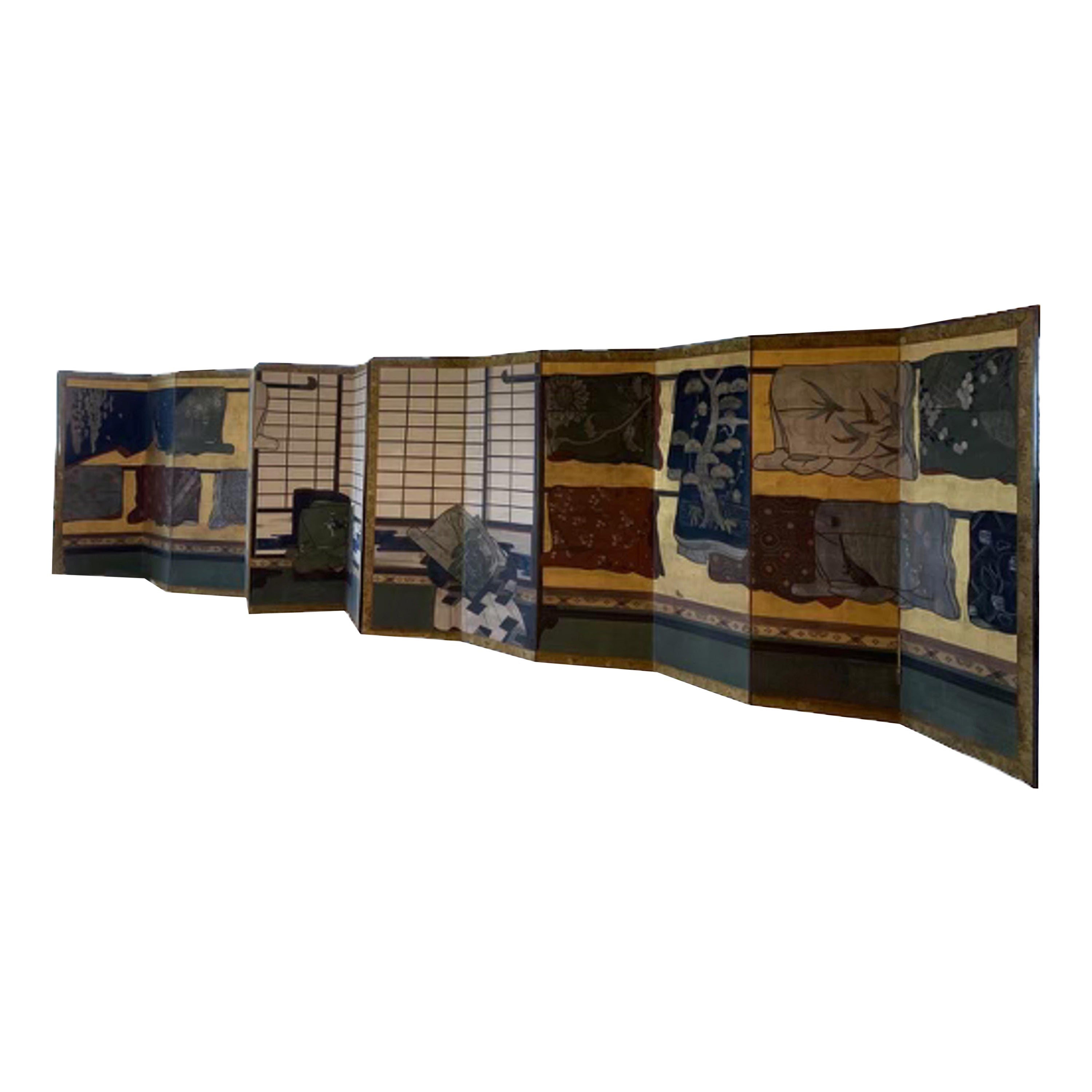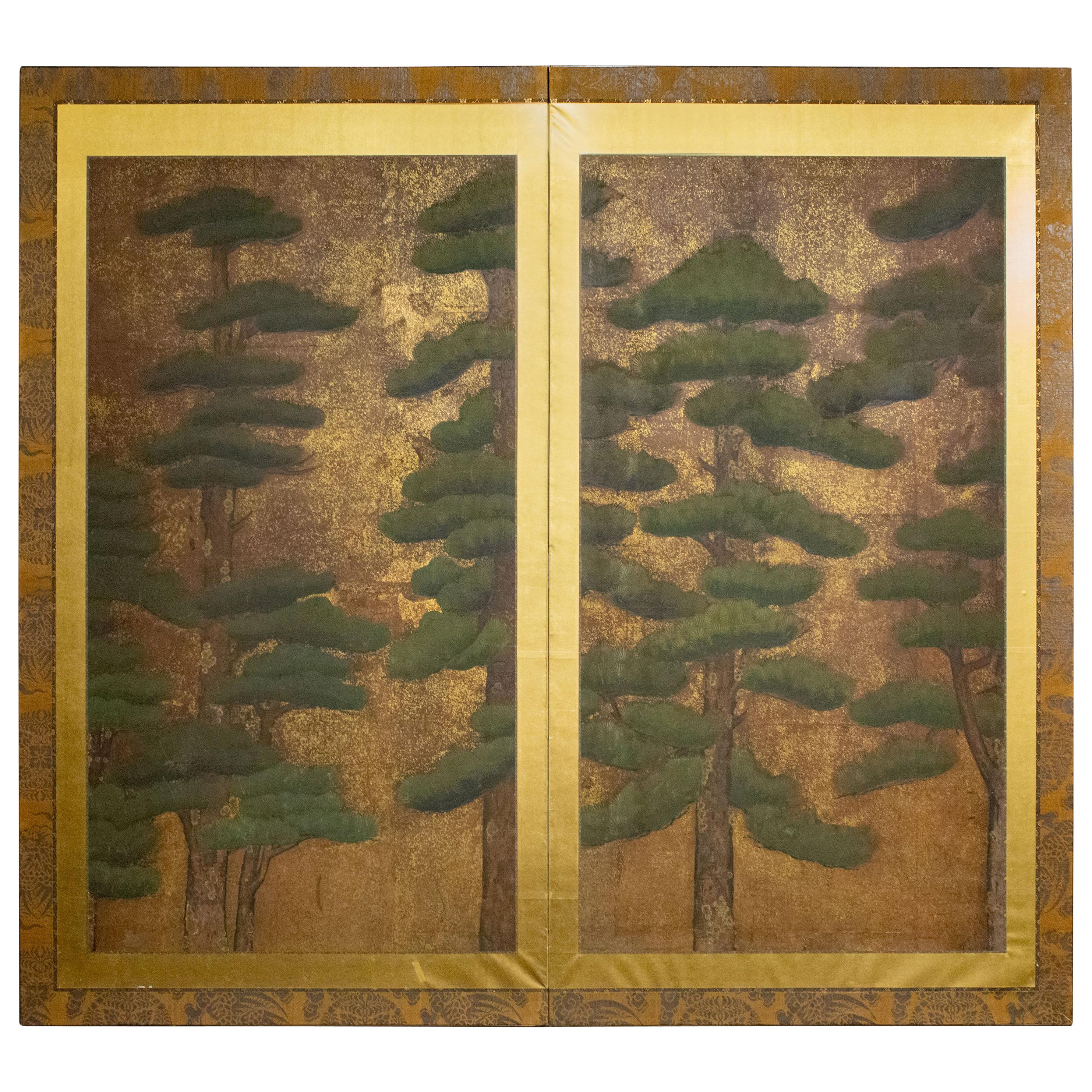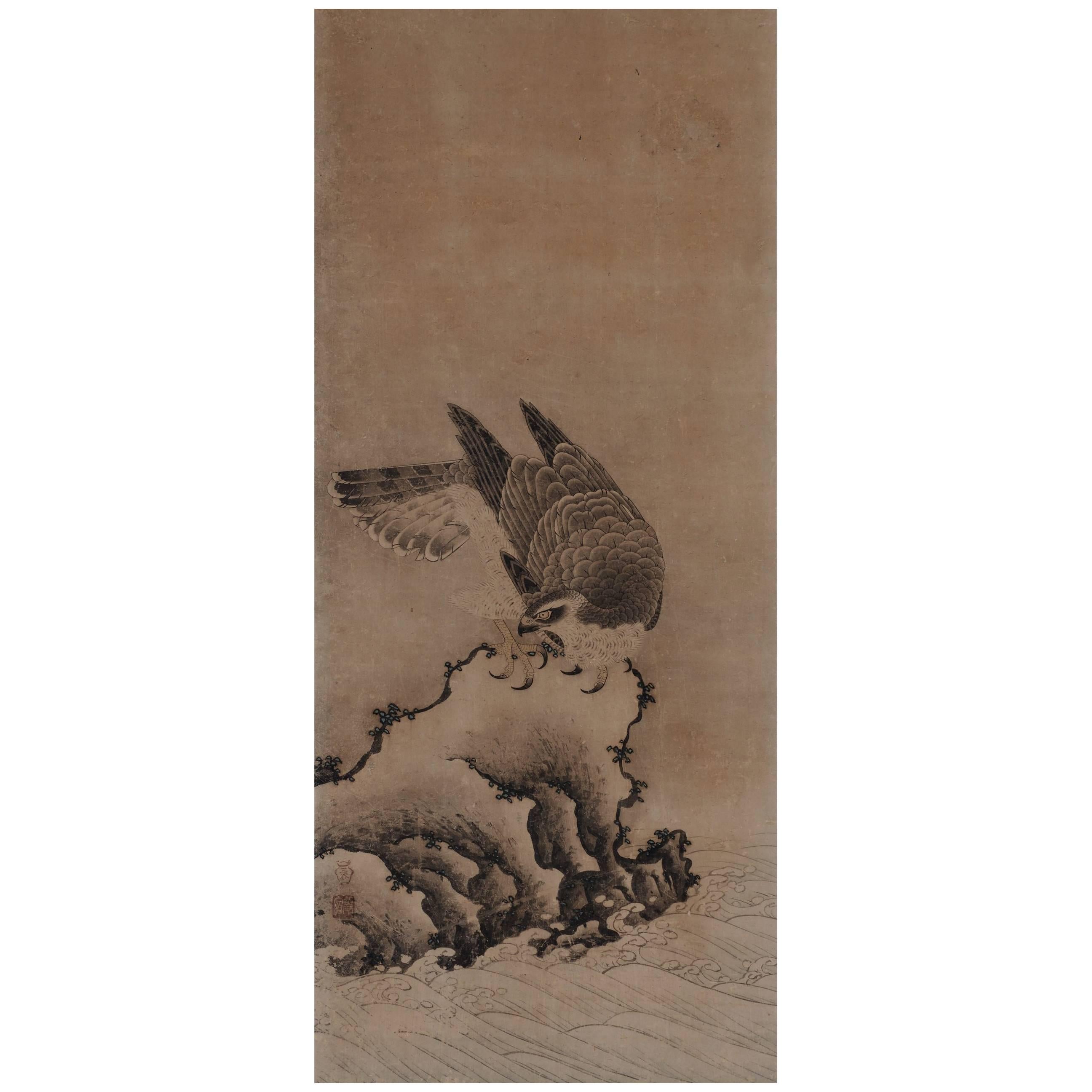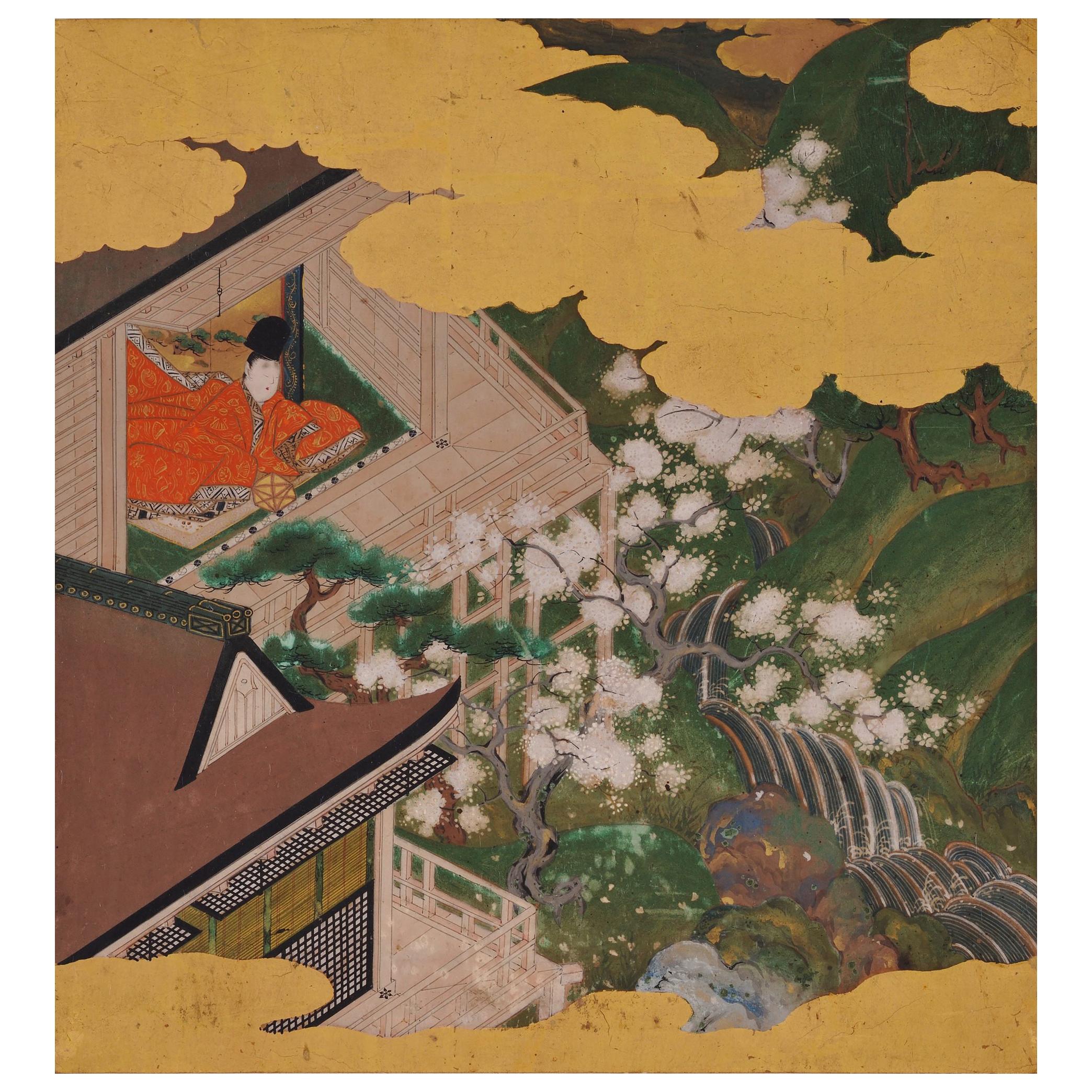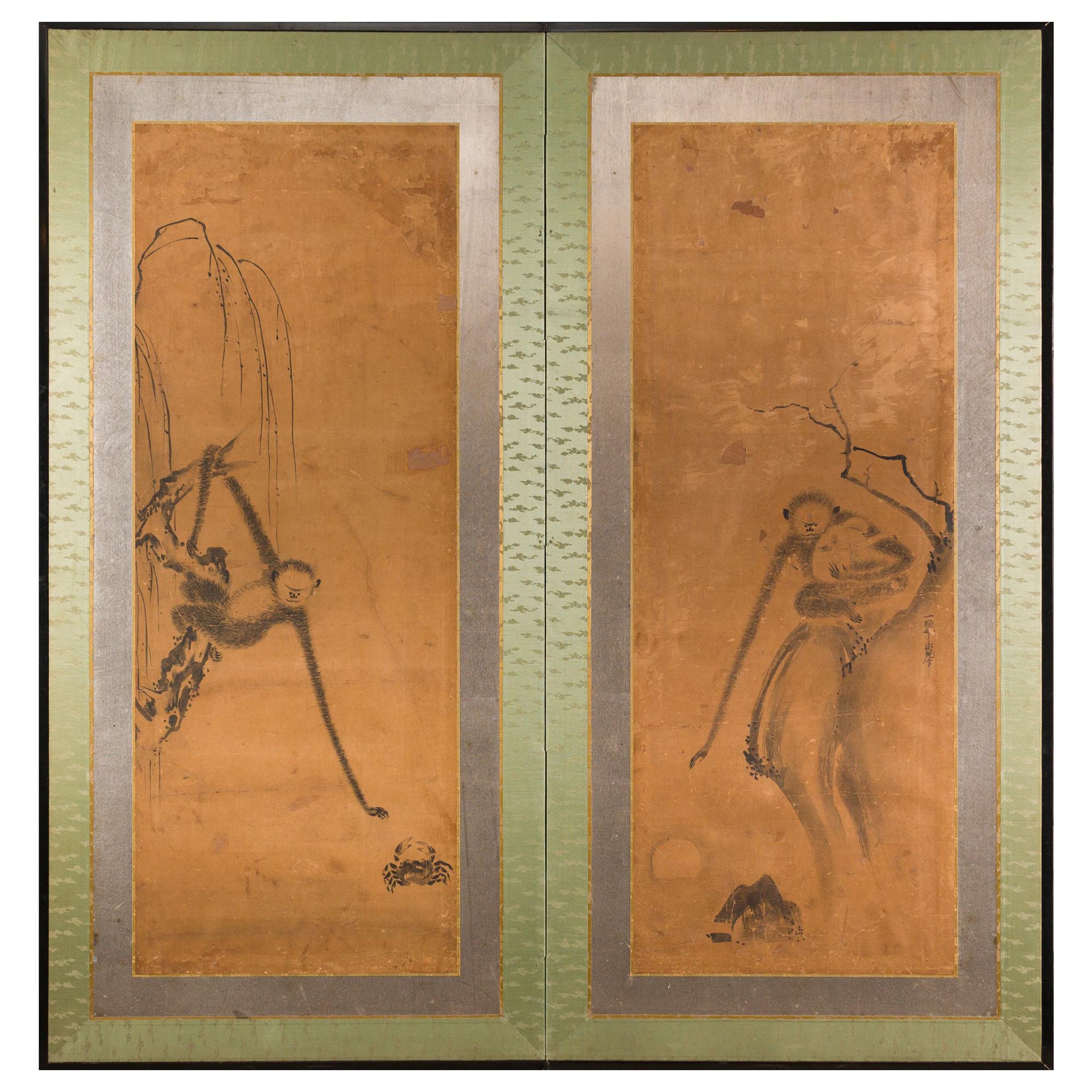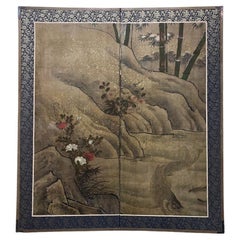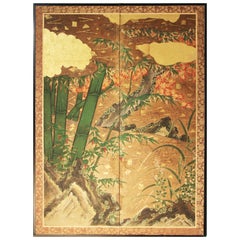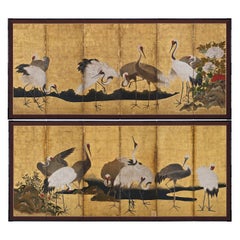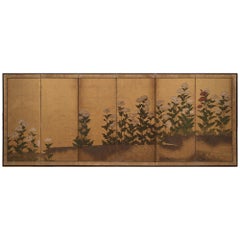
Japanese Rinpa School Folding Screen with Poppies, 17th Century
View Similar Items
Want more images or videos?
Request additional images or videos from the seller
1 of 9
Japanese Rinpa School Folding Screen with Poppies, 17th Century
About the Item
- Dimensions:Height: 44.1 in (112 cm)Width: 110.24 in (280 cm)Depth: 0.79 in (2 cm)
- Materials and Techniques:
- Place of Origin:
- Period:
- Date of Manufacture:circa 1650-1670
- Condition:
- Seller Location:Milano, IT
- Reference Number:Seller: 10731stDibs: LU4250212662872
About the Seller
5.0
Recognized Seller
These prestigious sellers are industry leaders and represent the highest echelon for item quality and design.
Established in 2005
1stDibs seller since 2018
10 sales on 1stDibs
Typical response time: 3 hours
More From This SellerView All
- Japanese Folding Screen with a Spring Landscape, Kano School, 19th CenturyLocated in Milano, ITThe scene is dominated by a plum tree in bloom under which a couple of paradise birds is courting. The screen is crossed by a luxuriant creek, a typical feature of the springtime.Category
Antique 19th Century Japanese Paintings and Screens
MaterialsPaper
- Pair of Japanese Two-Fold Screens with Flower Arrangements and Rare BirdsLocated in Milano, ITKaramono with flower arrangements and rare birds Edo period, 18th century Pair of two-panel folding screens Ink, colors, gofun and gold leaf on paper Each 170 by 165 cm ...Category
Antique 18th Century Japanese Paintings and Screens
MaterialsPaper
- Japanese Two-Panel Screen with Scenes at the Pleasure Quarters, 18th CenturyLocated in Milano, ITIn the pleasure districts, the stringent codes were meant to be forgotten. In this painting, some clients are watching from outside the teahouse, while some are entering, one of them...Category
Antique 18th Century Japanese Paintings and Screens
MaterialsPaper
- Pair of Japanese Screens with Flowers of the Four Seasons, 19th CenturyLocated in Milano, ITThis pair of screens belongs to a genre of lyrical paintings of flowers, grasses, and other plants that flourished around the middle of the 17th century and became a specialty of the Sôtatsu studio. The use of a rather complex composition of clusters of flowers and the puddling of ink was initiated by Tawaraya Sôtatsu, the founder of the Rimpa School, who was active from 1600 until 1642. The screens are abstract and decorative but there is, at the same time, a keen sense of naturalism not only in the attention to accurate detail but in the profusion of vegetation. The passage of the year is symbolized by the variety of plants that bloom in different seasons. The tarashikomi - here used on leaves, petals and trunks - is a Classic Rinpa technique in which pale black ink or a color is brushed onto an area of a painting and then either darker ink, or the same or a contrasting color, is dropped into the first before it has completely dried, creating an effect of pooled colors with softly blurred edges. Its delicacy, preciousness, and effeminacy are identified with the over-refinement of its patrons, while the vigor, monochromatic discipline, sharp observation, and virile forms of the Kano school are a testament to the vitality of the rising warrior class. The plants are almost all identifiable: in the summer-spring part, you can find wheat, buttercups, irises, begonias, hydrangeas, coral bells...Category
Antique 19th Century Japanese Paintings and Screens
MaterialsPaper
- Pair of Six-Panel Folding Screens with Peonies and Other FlowersLocated in Milano, ITA pair of six-panel folding screens with peonies and other flowers 19th century Each 72.5 by 241 cm Small and elegant screens with an ideal scene depicting peonies and other flower species...Category
Antique 19th Century Japanese Paintings and Screens
MaterialsPaper
- Japanese Lacquered Basin with Ear-Shaped Handles 'Mimidarai', 17th CenturyLocated in Milano, ITWooden basin with ear-shaped handles decorated with hiramaki-e lacquer and gold and silver kirigane on a nashi-ji ground. The large and thick antique woo...Category
Antique 17th Century Japanese Lacquer
MaterialsWood
You May Also Like
- 17th Century Rinpa School Two-Panel Screen with KoiBy Rimpa SchoolLocated in Fukuoka, JP17th-18th Century Rinpa School Two-Panel Screen Period: 17th-18th century Size: 140 x 125 cm (55 x 49 inches) SKU: PTA43 This beautiful two-panel screen is a classic example of the...Category
Antique 17th Century Japanese Edo Paintings and Screens
MaterialsWood, Paper
- Edo, Japanese Screen Two Panels Rinpa SchoolBy Japanese StudioLocated in Brescia, ITLandscape with Flowers and Bamboo by an 18th century painter of the Rinpa school, two panels painted in ink on gold leaf and vegetable paper. The flowers...Category
Antique 18th Century Japanese Edo Paintings and Screens
MaterialsGold Leaf
- 17th Century Japanese Screen Pair, CranesLocated in Kyoto, JPCranes Anonymous, Kano School. Edo period, second half of the 17th century. Pair of six-panel screens. Ink, pigment gofun and gold l...Category
Antique 1670s Japanese Edo Paintings and Screens
MaterialsGold Leaf
$85,000 / set - Two-panel screen of " Rinpa School"By Japanese StudioLocated in Brescia, ITFloral scene of a Rimpa School garden with polychrome chrysanthemum flowers. Two-panel screen painted in pigment on gilded rice paper of beautiful size and well preserved. Bold color...Category
20th Century Japanese Showa Paintings and Screens
MaterialsGold Leaf
- 17th Century 'Late 1600s', Japanese Edo Period 12-Panel Folding Screen PaintedLocated in North Miami, FLA pair of 17th Century (Late 1600s) Japanese Edo screens made of 12-panels. This folding silk screen is painted on a gold leaf background. It has a...Category
Antique 17th Century Japanese Edo Paintings and Screens
MaterialsSilk, Wood, Paint, Paper
- Japanese 17th Century Two Panel Screen, Pine with Gold DustLocated in Hudson, NYBeautiful 17th century painting of pine trees. Painting in good condition on 19th century mounting. Mineral pigments and gold dust on mulberry paper w...Category
Antique 17th Century Japanese Edo Paintings and Screens
MaterialsPaper
Recently Viewed
View AllMore Ways To Browse
Japanese Screens Six Fold
Red Folding Screen
17th Century Japanese Paintings
Chrysanthemum Screen
17th Century Japanese Screens
Japanese Screen Chrysanthemums
Rinpa Screen
Rinpa School
Japanese Screen Rinpa
17th Century Japanese Six Panel Painting
Rinpa Folding Screen
Japanese Screen Painting
Screen Japanese Screen
Japanese Screens
Japanese Screen
Japan Screen
Japanes Screen
Japan Gold Painting

